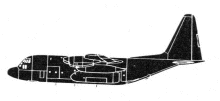Incident Overview

Description
The Lockheed Hudson departed Lae Airfield for Bulolo and Wau, Papua New Guinea, at 09:19 hours. Shortly after takeoff, when at an altitude of about 500 feet, the no.1 engine failed. The aircraft then stalled and spun into the ground on an island in the Markham River. Only the pilot was provided with a seat and seatbelt as the airplane was operated in freighter configuration. The loss of power on the no.1 engine was due to the failure, through fatigue, of the Accessory Drive Gear. Cause: “Loss of control of the aircraft, most probably due to poor technique on the part of the pilot, following failure of the port engine shortly after takeoff. Probabe contributory causes: 1. The inadequate conversion course to Hudson aircraft undergone by the pilot. The syllabus laid down in Air Navigation Orders was not followed, in that the pilot was not required to demonstrate adequatly his ability to control the aircraft in asymmetric flight during landing and takeoff, and in stalling. 2. The incorrect disposabl of the load, resulting in the position of the Centre of Gravity of the aircraft being outside the rearmost limit laid down in the Interim Certificate of Airworthiness of VH-ALA. Under these conditions the stability of the aircraft would be adversely affected.”
Source of Information
http://www.adastron.com/lockheed/hudson/vh-ala.htmhttp://www.adastron.com/lockheed/hudson/vh-ala.htmPrimary Cause
Fatigue in the Accessory Drive Gear of the no.1 engine, compounded by inadequate conversion course and improper load distribution.Fatigue in the Accessory Drive Gear of the no.1 engine, compounded by inadequate conversion course and improper load distribution.Share on:



